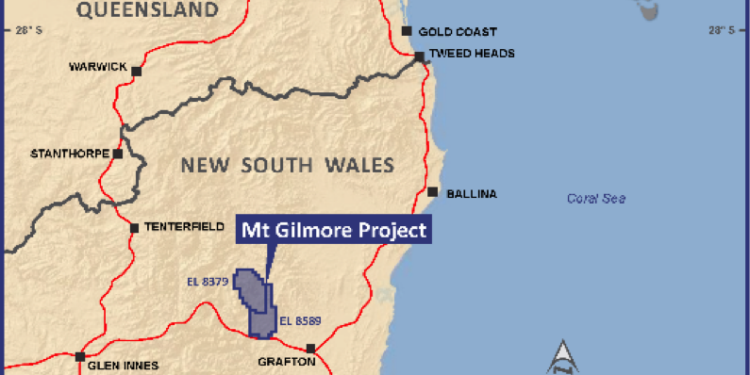Preparations Underway To Drill Test New Target At Mt Gilmore
Corazon Mining Limited (ASX: CZN) believes the identification of a copper-bearing diorite porphyry intrusion at the Gordonbrook Hill Prospect has significantly advanced the prospectivity of the Mt Gilmore Project in NSW.
The intrusion is located coincidently on the margins of a high-grade copper and gold soil geochemical anomaly, and the surface projection of a concealed, high-value, Induced Polarisation (IP) geophysical anomaly.
Managing Director, Brett Smith, said these coincident geochemical and geophysical anomalies at Gordonbrook Hill represent a significant mineralised porphyry target, which is now the priority target at Mt Gilmore.
Detailed planning for drilling is underway, along with requisite New South Wales Government permitting and approvals for drilling.
The porphyry intrusion outcropping at the Gordonbrook Hill is approximately 300 meters long, striking northeast-southwest and is semi-parallel with the strike of Gordonbrook Hill’s well-defined IP chargeability-high corridor.
The Mt Gilmore Project is centred on an anomalous copper, gold, silver, cobalt and molybdenum trend, which is in excess of 20 kilometres in length.
The source of this metal anomalism has yet to be determined, however the model being targeted is a copper-gold intrusive related system. This style of mineralisation is prevalent on the east coast of Australia.
Element mapping of a diorite porphyry sample from the Gordonbrook Hill Prospect has been conducted using Micro-XRF by Portable Spectral Services Pty Ltd (Figure 2), with highly encouraging outcomes.
The analysis shows that the diorite porphyry is rich in hornblende, indicating a favourable water-rich magma source. Pervasive potassic alteration has occurred throughout the rock and copper mineralisation presents in the form of sulphide. This association typically presents in strongly altered domains and positively correlates with prospective hydrothermal systems.
Mr Smith said these observations are encouraging, as mineralised porphyry systems usually occur as part of porphyritic intrusive complexes. He added that although it remains unclear whether the pervasive potassic alteration (associated with copper sulphide mineralisation) is related to the diorite porphyry or other concealed intrusions, the observation suggests that a potassic-rich hydrothermal event – with the capacity of forming copper mineralisation – has occurred within the Gordonbrook Hill Prospect.












